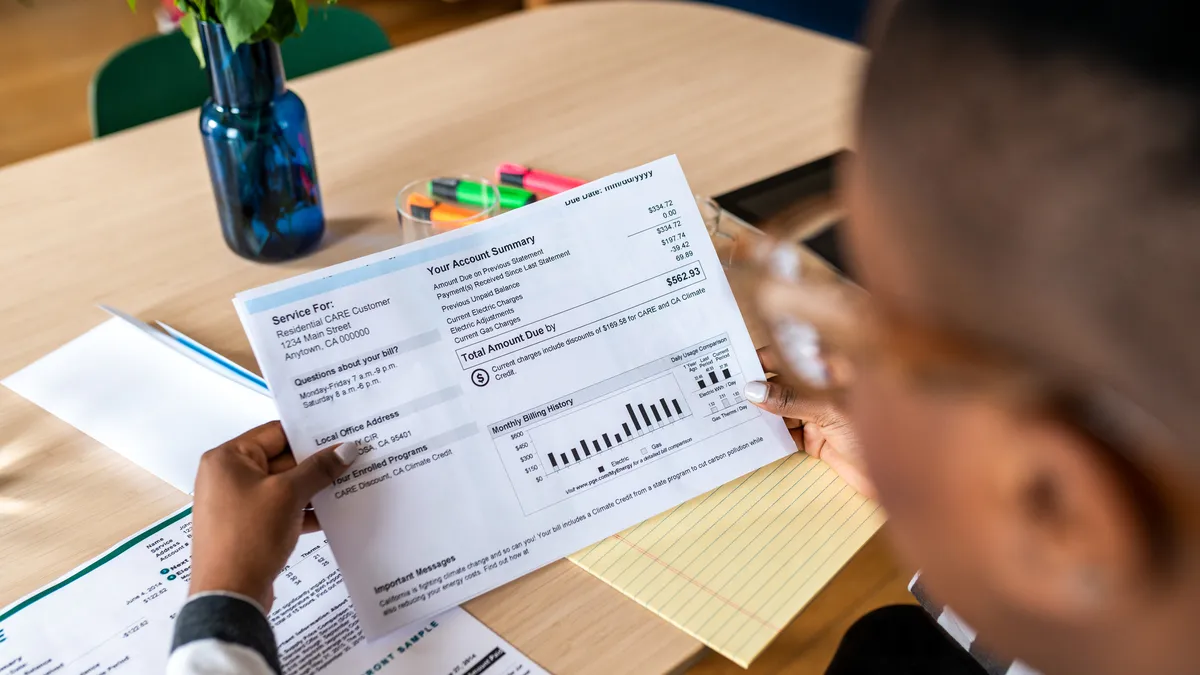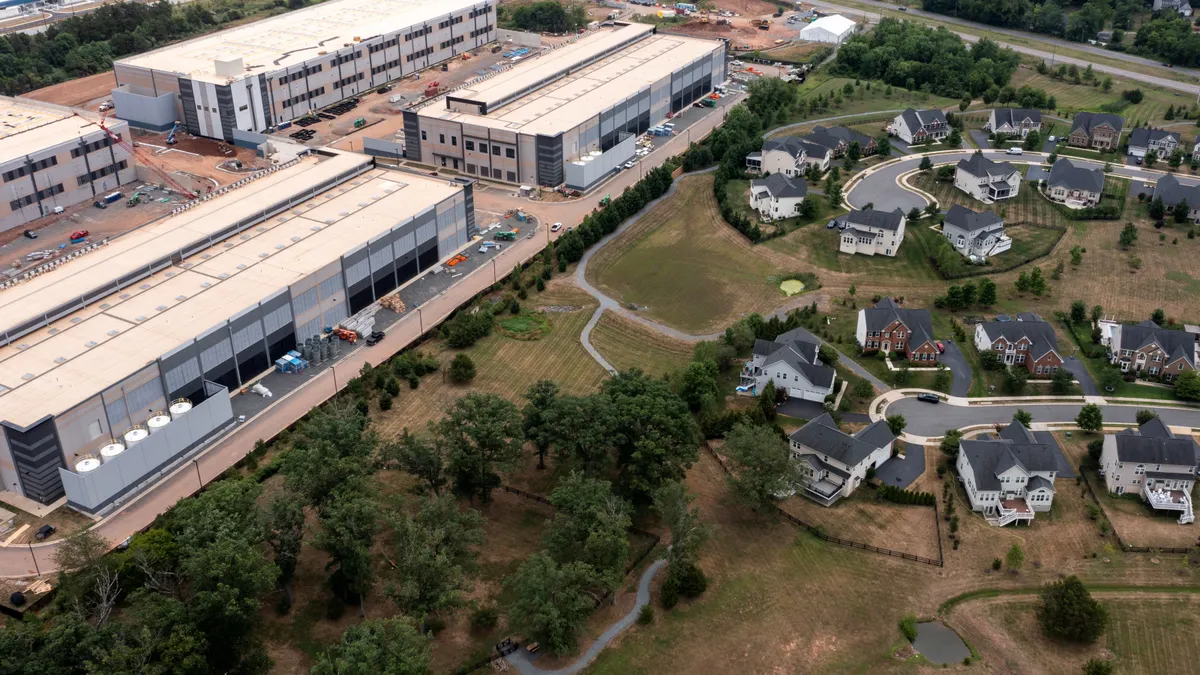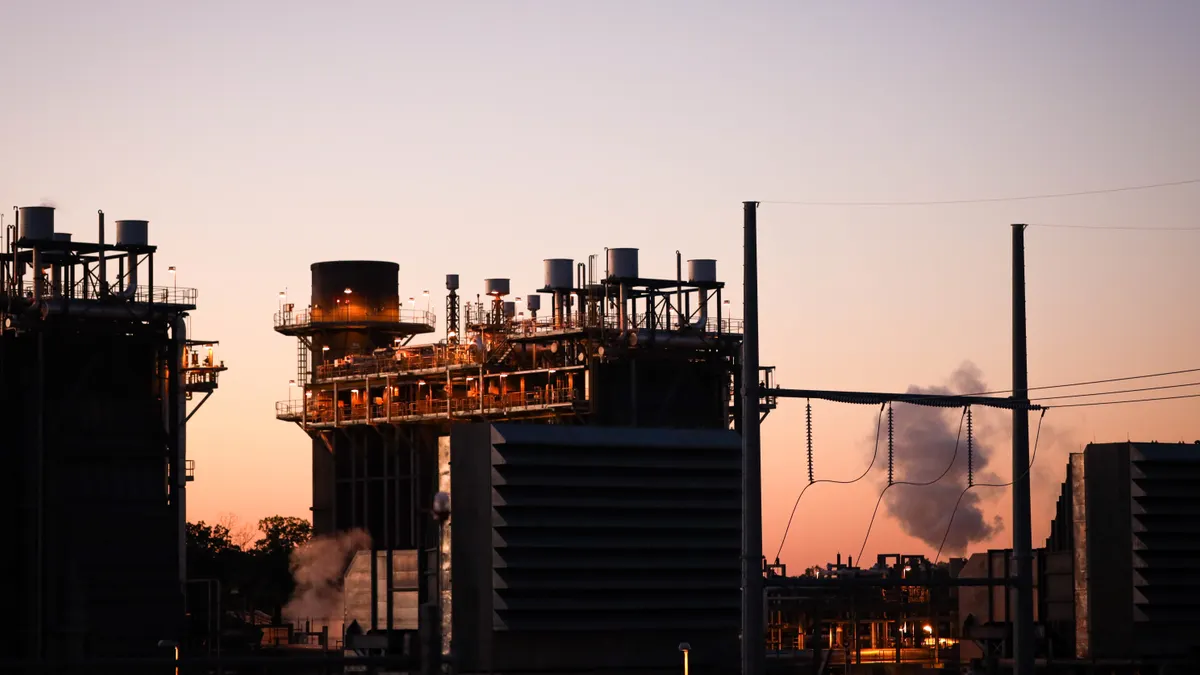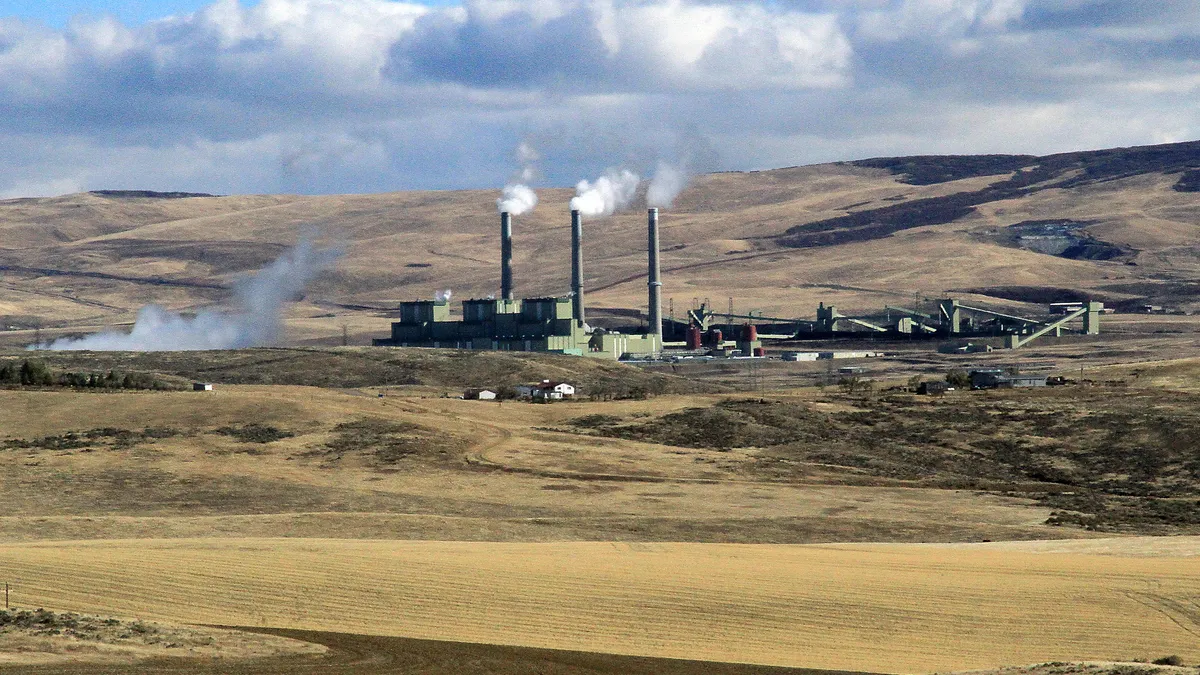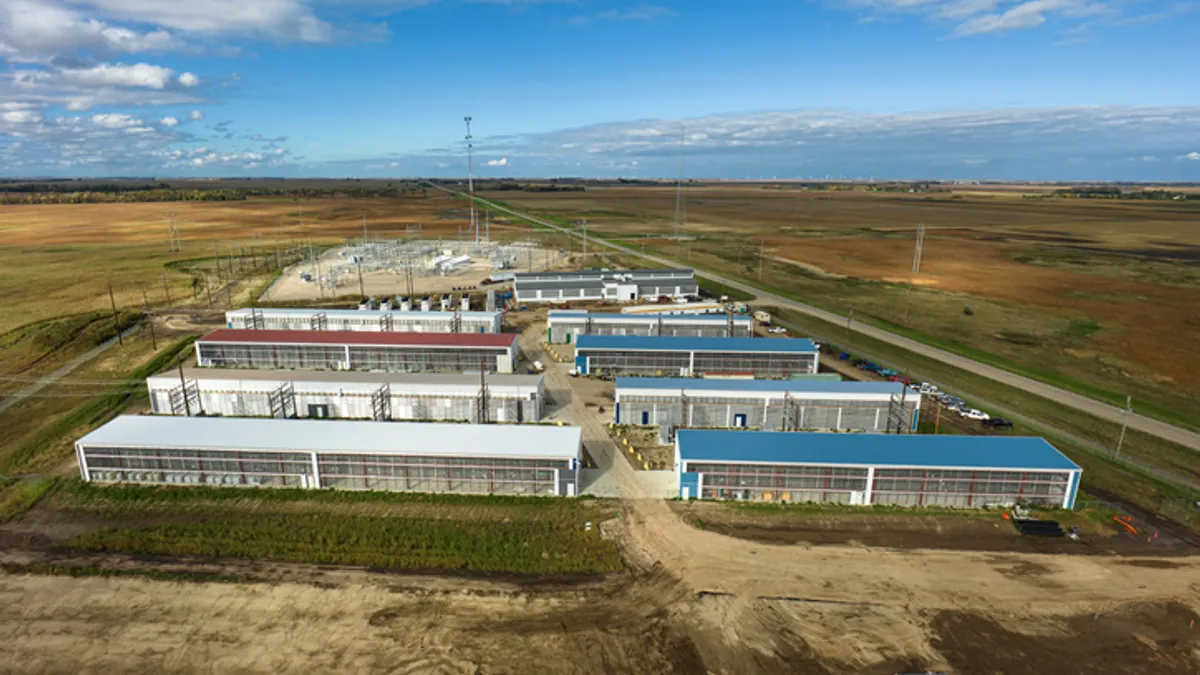Emerging floating offshore wind technologies could save California electricity customers billions in the next two decades and play a key role in achieving the state's ambitious climate and renewable energy goals, a new report concludes.
But the mechanics of floating wind remain unproven at scale and developers face multiple permitting and financing hurdles. Nevertheless, California could be where floating offshore wind (OSW) finally breaks into the U.S. market, developers and offshore wind researchers told Utility Dive.
An August study by Energy + Environment Economics (E3) found California ratepayer savings could reach $2 billion due to OSW's "proximity to in-state electricity demand" and could produce up to 9 GW of emissions-free energy by 2040 at substantial customer savings.
All U.S. OSW to date has been developed and contracted off the Atlantic coast, where coastal shallow waters make fixed bottom development cost-effective. California's deep near-shore waters make floating technology the only practical ocean wind choice, though no development has taken place yet.
Two California load serving entities (LSEs) have signed non-binding offtaker agreements with floating OSW developers. But finding committed offtakers may be difficult until proof of reliability comes from unfinished international projects in Europe and Asia.
Finding offtakers may also be a challenge in California, as the customer choice movement stalls established LSEs' procurements and doubts about the creditworthiness of new LSEs persists. Some say solar+storage is the smarter choice.
Floating wind
The U.S. OSW industry has one operational 30 MW fixed foundation project off the coast of Rhode Island, but 19 fixed foundation projects are in development and more are being planned, according to the National Renewable Energy Laboratory (NREL) August 2018 market report.
The 5.3 GW of state OSW-specific commitments in 2017 grew to almost 20 GW by early 2019, NREL reported. Massachusetts committed to 1.6 GW, New York 6.6 GW, New Jersey 2.4 GW, Connecticut 2.4 GW and Maryland 1.2 GW.
Fixed foundation technology has allowed almost 22.6 GW of global capacity across 176 projects to operate. But on the Pacific coast, the shelf drops off near shore, making the sea bottom too deep for fixed foundations.
Scotland's 30 MW Equinor project, in its second year of operation, is the most substantial validation of floating OSW to date. But 14 floating OSW projects in nine countries, representing 200 MW of capacity, are now moving ahead and will likely determine the near-term fate of the technology, NREL Research Scientist and report lead author Walt Musial said during an Aug. 22 webinar.
These "second-generation" and "precommercial" pilots are "expected to be commercially available by the mid-2020s," NREL reported. Though technology challenges remain, the potential "seems similar to fixed-bottom wind."
Floating in California
In 2018, California committed to 60% renewable electricity by 2030 and 100% carbon-free power by 2045.
Growing commercial experience with floating OSW "will unlock wind resources in deeper waters, such as those off the coast of California," according to E3. But the state's long-term planning has not included it.
E3 assessed the state's OSW potential in its study and found a least-cost energy mix that includes 7 GW to 9 GW of OSW by 2030 would meet 10% of the state's electricity needs while providing up to $2 billion in customer savings. And demand for the resource would increase after 2030 "as California's policy goals become more stringent," the report added.
"When you look at the scale of California's long-term needs, offshore wind should be part of its planning," E3 Senior Consultant and study lead author Sanderson Hull told Utility Dive.
OSW "is more expensive, but it can also be more valuable if it displaces fossil fuels when other emissions-free resources are not available."

Sanderson Hull
Senior Consultant, E3
OSW developer Castle Wind commissioned the study and E3 used their cost assumptions, which Hull said were "in line" with assumptions used in the market-neutral NREL report.
Analysts forecast the levelized cost of energy (LCOE) for floating OSW will fall to $75/MWh by 2030, NREL found, while recent market bids for onshore wind, utility-scale solar and solar+storage have had an LCOE under $50/MWh.
But floating OSW can still be part of a least cost portfolio that balances "market price, carbon reduction value and resource costs," Hull said. "It is more expensive, but it can also be more valuable if it displaces fossil fuels when other emissions-free resources are not available."
With California's push for vehicle and building electrification, serving peak demand spikes may become more challenging, and "that's where offshore wind beats solar," he said. OSW may have an "even higher value in meeting reliability needs."
California policymakers are beginning to value these new factors, but offtakers' first priority is the power purchase agreement (PPA) price.
There will be offtakers
"Large-scale OSW project financing requires creditworthy offtakers," Stephanie McClellan, director of the University of Delaware Special Initiative on Offshore Wind, told Utility Dive. The two offtaker agreements signed in California to date, both non-binding, offer little revenue certainty.
It will be "critical" to have revenue certainty through binding PPAs after BOEM lease auctions, expected in late 2020, give developers site control, and developers clear lengthy local, state and federal permitting processes, she said.
California's investor-owned utilities led LSEs in renewables procurement through 2016, but are expected to lose much of their customer base to community choice aggregators (CCAs) by the mid-2020s. Though most CCAs are new and lack established credit, they have begun procuring to meet the state's renewables mandate, according to CPUC data.
Monterrey Bay Clean Power (MBCP) formed as a CCA less than two years ago, signed a non-binding 1,000 MW memorandum of understanding (MOU) with Castle Wind in July for floating OSW development, MBCP spokesperson J.R. Killigrew told Utility Dive.
MBCP lacks a credit rating, but completed three long-term PPAs for almost 500 MW of new renewables in 2018 by providing developers the necessary assurances, Killigrew said. And "we continue to work on new PPAs with developers."
If Castle Wind is awarded a BOEM lease off California's central coast, it would then need to secure 21 local, state and federal permits before entering into a PPA, he said. "That may not be done until 2023 or 2024, and we hope to have a credit rating in the next 24 months."
"I have said for 10 years that floating offshore wind is the future, and it is finally on the verge of happening."

Alla Weinstein
CEO, Castle Wind
OSW "only works for us is if the price is competitive with other renewables, but the meaning of competitive may be very different by then," Killigrew added. "As more renewables are integrated into our grid, we will need a balanced network of resources that can run when the sun is not out or when storage is depleted."
Castle could also keep OSW costs manageable by interconnecting through a shuttered central coast natural gas plant's unused transmission infrastructure, he said.
MBCP is unlikely to need 1,000 MW of OSW, he acknowledged. "But we know there will be other interested offtakers, especially CCAs, because this MOU has started that conversation."
CCA Redwood Coast Energy Authority (RCEA), which also does not have a credit rating, signed a 100 MW to 150 MW non-binding MOU for OSW in 2018 with developer Principle Power and partners. Their unsolicited lease request to BOEM for an area off Humboldt Bay was absorbed into the lease auction process, RCEA Executive Director Matthew Marshall told Utility Dive.
The CCA and Principle Power are actively pursuing a transmission interconnection and engaging potential technology vendors, Marshall said. "RCEA would be the anchor tenant and others who have shown interest, mostly CCAS, would also be off-takers."
RCEA hopes, like MBCP, to have a credit rating by the time it is necessary to sign a PPA, he added. "Terms for offshore wind would likely be better with a credit rating, and that could be important in attracting other offtakers because it will probably not be the lowest-cost power."
By the end of 2020, there will be about 200 MW of floating OSW capacity online around the world, Castle Wind CEO Alla Weinstein told Utility Dive. "I have said for 10 years that floating offshore wind is the future, and it is finally on the verge of happening."
The advantages of floating
Floating OSW has two major cost advantages over fixed foundation OSW, Magellan Wind CEO Jim Lanard and Atlantic Shores Offshore Wind Manager Doug Copeland told Utility Dive. First, each fixed foundation must be made to fit its place on the ocean floor, but floating OSW platforms are standardized and can therefore be manufactured in a less expensive, assembly-line like process.
Second, floating turbines can be built dockside or in the harbor and towed to their installation sites instead of being built into the seabed far offshore. That significantly reduces costs for labor and specialized construction vessels.
The next generation of floating projects "will show two things," Business Network for Offshore Wind Executive VP Ross Tyler told Utility Dive. "First, floating offshore technology is viable, and, second, technology is driving costs down."
There is one other economic driver for California's floating OSW off-takers. If California eventually pursues its 112 GW technical OSW potential aggressively enough to build 18 GW of new capacity by 2045, it will add 17,500 high quality jobs, according to a February 2019 study by multiple research groups and published by the American Jobs Project.
That could revitalize ports like those at Morro Bay and Humboldt Bay. CCAs will be looking for ways to make the OSW case and that is one way to do it.
Another important case is to demonstrate how OSW is not a competitor but a complement to the popular solar+storage solution.
OSW v. solar+storage
OSW and solar+storage will complement each other as well as compete with each other, stakeholders agreed.
Solar can serve California's mid-day load, but it will take a lot of storage to meet its evening peak demand, Hull said. And beyond 2035, the huge demand for renewables will make it difficult to find solar+storage sites, which will make the offshore wind option more valuable.
E3 found short duration of batteries gives solar+storage "limitations for meeting seasonal and weather-driven needs," he added.
"[T]he question is not if offshore wind will be built in California. The questions are when, where and how it will be built."

Stephanie McClellan
Director, University of Delaware Special Initiative on Offshore Wind
The "basic driver" for battery storage is "to help shave evening peak demand," MBCP's Killigrew agreed. "Offshore wind is complementary because the grid cannot run on just solar-plus-storage, unless we have storage technology that can be deployed for 16 hours or 24 hours."
Even a major storage duration breakthrough will not diminish OSW's diversity value because the wind blows when the sun is not shining and it delivers power near coastal population centers, Magellan Wind's Lanard added. "There has to be a significant amount of wind, either from out of state, or from off the coast, or both, because it protects reliability when storage is depleted and there is not enough solar to recharge it."
RCEA's Marshall agreed. "It does not seem like we could build enough storage, especially to meet transportation needs, and having generation that complements solar-plus-storage gives LSEs more tools," he said. "We need every tool in the toolbox to eliminate fossil fuels."
New York had no OSW in its 50% renewables mandate in 2016, but is projecting that 30% to 40% of its electricity will come from OSW by 2040, University of Delaware's McClellan said. "There is no way we ever would have predicted that, and California is where east coast development was a few years ago."
To get to its zero emissions economy-wide goal, "the question is not if offshore wind will be built in California," she said. "The questions are when, where and how it will be built."







